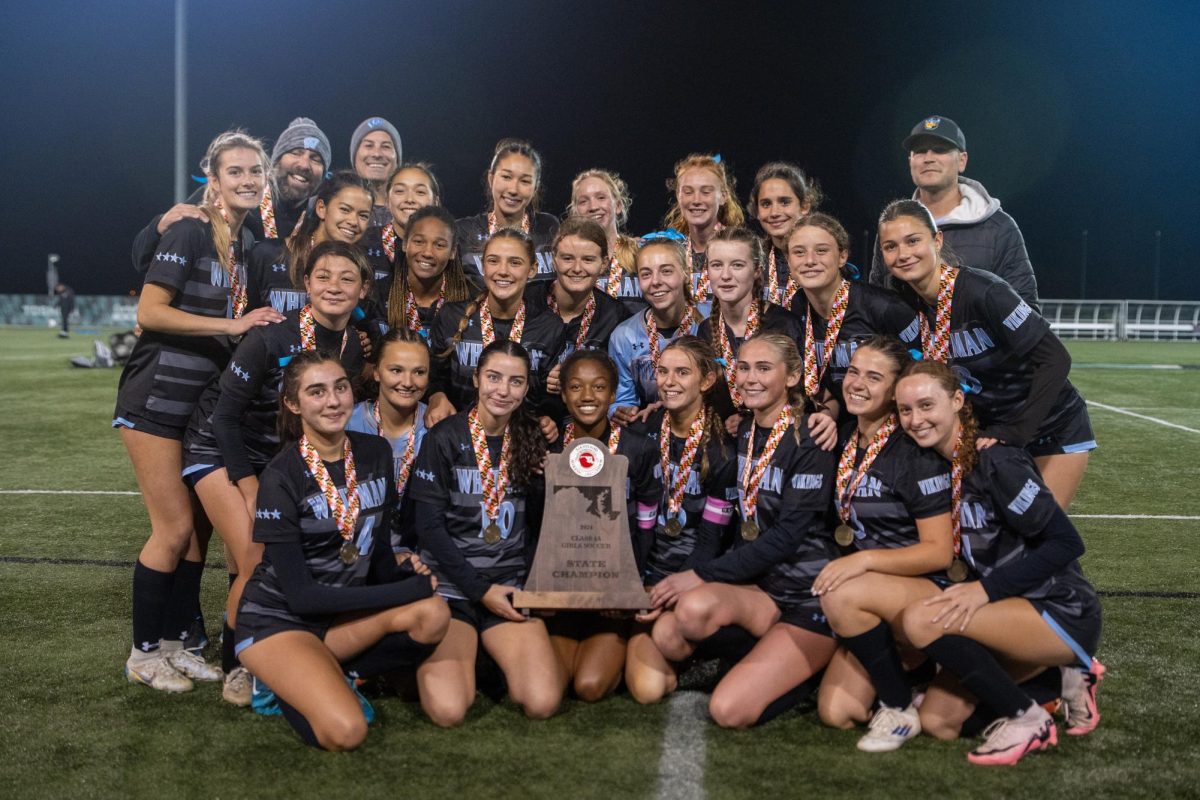
Recent injuries to athletes such as Mikey Stevens, Lucy Arledge and Emily Mashek, along with concussions to Daniel Voigt and many other professional athletes, have brought about an increase in injury prevention at all levels of play.
Last year, right before football season, Stevens found out he had torn his navicular joint, which is located in the middle of the foot. The same injury sidelined him for the majority of this season.
“After a month and a half of constant MRI’s, [the doctors] finally found the problem,” Stevens said. “Right before football season I had cortisone shots, then another one in Week 11 [before playoffs], and right after hockey season I had my last one.”
For Stevens, the most important part of getting back onto the field is avoiding serious setbacks that would knock him out for significant periods of time.
“I am trying everything to avoid surgery because surgery is a very scary thing,” Stevens said. “Right now I have very expensive orthotics and am working with a personal trainer.”
Personal trainers such as Mike Duckworth, strength coach from Explosive Performance, work with athletes to help them minimize injury potential.
“Stretching is key; it loosens up all your muscles, which in return loosens everything up around your joints, tendons, and ligaments,” he said. “This insures that an athlete’s joints and ligaments are ready for the stressors that sports put on them.”
Sports teams went through injury prevention clinics over the summer aimed at informing athletes how to avoid injuries.
“We had guys from Jett Training come, and each individual player was tested to see [each one of their weaknesses],” girls soccer player Lara White said. “Each person then got an assessment of what they specifically needed to work on. They gave us some exercises we could do.”
These injury prevention programs are a huge help towards minimizing risk. Sometimes, though, an injury is unavoidable.
Orthopedic surgeon Richard Barth, currently with Washington Orthopedics and Sports Medicine, often deals with sports-related bone and muscle injuries.
Rehabilitation programs help the athlete recover completely from the injury. But, depending on the seriousness of the injury, a full recovery is not always guaranteed.
“If you’re talking about a sprain or strain, the probability of returning to 100 percent is very high,” Barth said. “If you’re talking about an ACL, the probability is around 95 percent. If you have a very severe knee injury, it could be career-ending. It just all depends.”
In recent years, high school contact sports have become more aggressive, and as a result, the concussion rate has risen to a concerning level. Dave Milzman, an emergency room physician who serves as the director of the Georgetown University Sport and Medicine center, has dealt with concussions over the years.
“Most people know how to recognize what a concussion is,” Milzman said, “but what people do wrong is that they don’t rest. If you go back and start using the brain without resting it, it doesn’t have any chance to get better.”
After receiving a blow to the head while training for basketball six months ago, senior Daniel Voigt didn’t give his brain time to rest, and he still feels the effects.
“I’d never had a concussion so I didn’t know what it was yet,” he said. “I refrained from physical contact, but was still working out and staying active. It eventually worsened, so I was recommended to a neurologist who tested my reflexes and memory.”
A few weeks later, Voigt underwent the Baseline Concussion Test (BCT), which is used to measure concussion symptoms by testing verbal and visual memory as well as reaction time.
According to ImPact, the company who created the test, BCT can help to objectively evaluate the concussed athlete’s post-injury condition and help approximate the time for a safe return.
Milzman adds that athletes who suffer concussions should not only refrain from sports, but from school in general for at least three days. Those days should be spent away from the TV and books. Only through extensive sleep will the brain have time to recover.
“What we’re trying to do is prevent Second Impact Syndrome, which basically weakens the brain to the point where there is a lifetime of problems,” Milzman said.
Injuries to NFL athletes Clinton Portis and Brian Westbrook, among others, have helped rally the support for new helmet technology. New football helmets are much more advanced than those of the 1990s. The Xenith X1 helmet, first introduced in 2007, uses 18 thermoplastic air cell shock absorbers found all around the helmet. These cells distribute the impact over a greater area, which reduces the chance of brain injury and concussions.
Sports are changing, hits are becoming harder and players are becoming stronger. With all this, there are a few main steps to take to keep playing for a long time: stay flexible to avoid injury-prone situations, keep your head up and beware of your surroundings. And by all means, do your best to prevent contact and hits to the head.





